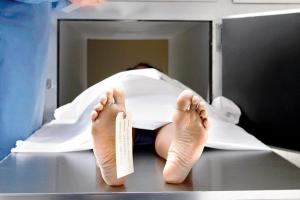BMC Commissioner Ajoy Mehta has given his nod for the project, which will cost around Rs 20 crore

Representational Image
Soon, post-mortem at Nair Hospital will no longer involve cutting open the deceased — it is set to become the 1st civic hospital in Maharashtra to start performing virtual autopsies.
ADVERTISEMENT
After a delay of almost four years, the hospital will get the first virtual post-mortem centre, where hi-tech diagnostic CT scanners with 3D imaging will be used to scan a body to identify the minutest of fractures, blood clots and other injuries invisible to the naked eye. Municipal Commissioner Ajoy Mehta has given his nod for the project, which will cost around Rs 20 crore.
Bleedin' red tape
In 2016, AIIMS became the first government hospital to start virtual autopsies. Mumbai had the chance but blew it — in 2014, it was proposed at Sion hospital, but red tape held it back.
Last week, civic officials held a meeting and okayed the idea of starting it as a pilot project in Nair Hospital. If successful, it will be replicated in KEM, Sion and Cooper hospitals.
Idzes Kundan, additional municipal commissioner, health, said the tendering process is yet to be done. "Currently, we are talking to doctors and taking their advice for this project. Once tendering is done, it will start soon," he added.
This will not only help to provide a more accurate analysis, but it will also result in faster reports, lessening the burden on forensic experts. This technology has garnered high praise for its accuracy in Malaysia, Switzerland and other European countries. "Virtual autopsy is done through CT scanners with 3D imaging; this not only saves time but also gives accurate results automatically through a software," said Dr. Ramesh Bharmal, dean, Nair Hospital.
It also gives the chance of repeated examinations. In cases of burn victims, it helps in facial reconstruction and identification. Also, deposition of water in organs, like brain, lungs and abdomen, can be ascertained precisely with this technology.
According to Dr. Harish Pathak, head of the forensic department at KEM Hospital, "This will help to conclude a post-mortem in 30 minutes, as opposed to the hours-long traditional method. It will also help to lessen the burden on forensic experts, especially in cases of disasters or massacres."
Keeping it whole
Corporator Rais Shaikh, who has been promoting this for years, said, "Families become traumatised when they see cuts and stitches on their loved ones' bodies after post-mortem. So, this technology will save the bereaved that additional pain."
What is it?
Virtual Autopsy is conducted with CT and MRI scans to probe bloodlessly inside cadavers. It helps to procure a clear image of organs and injuries on X-ray films without getting obstructed by blood and viscera. Prof Richard Dirnhofer (de), former head of the Institute of Forensic Medicine of the University of Bern, Switzerland, was the brainchild behind this advanced technology.
Multiple benefits
- It being minimally invasive will keep the body intact and be a more hygienic process.
- Forensic experts or pathologists won't face the risk of infection.
- The scan reports can be stored for years for medical studies and references.
- It will help to identify hairline fractures and minute details of blood clots in delicate vessels.
- It is transferable through web for rehearsed examination through generated photos.
- It allows documentation of abnormalities and wounds without tissue objection.
- Depth of a foreign body can be localised through scanning.
- In cases of drowning, the amount of water in organs can be ascertained.
Catch up on all the latest Mumbai news, crime news, current affairs, and also a complete guide on Mumbai from food to things to do and events across the city here. Also download the new mid-day Android and iOS apps to get latest updates
 Subscribe today by clicking the link and stay updated with the latest news!" Click here!
Subscribe today by clicking the link and stay updated with the latest news!" Click here!






